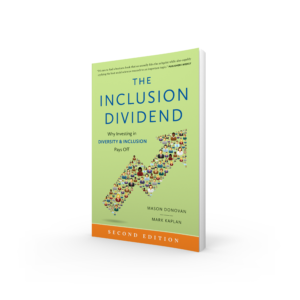 In Part 1 of this four part series, we discussed how an Employee Resource Group could inadvertently become exclusionary and, thus, lower the reach and effectiveness of their mission. Today, we would like to center in on the actual mission and understand how it can tip the scales for success or failure as an individual group or the overall ERG program.
In Part 1 of this four part series, we discussed how an Employee Resource Group could inadvertently become exclusionary and, thus, lower the reach and effectiveness of their mission. Today, we would like to center in on the actual mission and understand how it can tip the scales for success or failure as an individual group or the overall ERG program.
Before we look into the mission, we should take a step back and understand how and why the ERG was initially formed. If your company is like most, individuals who felt as though their voices were not being fully heard at the table formed around a common bond such as gender, sexual orientation, ethnicity, age, etc. etc. Conversation coalesced around issues important to the group, often barriers that group experiences in the organization, and eventually a ERG was formed. The second most common path of formation was a company proactively understanding there were reasons for having ERGs and officially created the ERG before the grassroots efforts kicked in.
The method of formation can be important since it often has an influence on the group mission. If formed out of a grassroots campaign, very often the mission is tied to group causes and can be disparate from other groups or even from the same group in other parts of the company. These groups can feel, to some, like cause activists.
If the latter path to formation was taken, the consistency of mission amongst the differing groups tends to be more aligned. Although this path may also take on a more social rather than business structure, a proactive approach generally bodes well. Ultimately though, the reasoning behind the group’s creation will largely influence the nature.
When we start working with our clients in the Amplifying Affinity Program, one of the very first items we study is the mission. ERGs not being fully funded or supported at an executive level usually do not have a mission directly tied to the business success of the company. Realizing companies are in business to make a profit which is done by having more revenue than expenses, any department or group mission not tied to this endeavor is at constant jeopardy of dissolution.
ERGs absorb employee time and corporate monies so their mission should in part be tied to providing a measureable dividend back to the company. Examples of this dividend could include increased employee engagement and lower turnover, to discovering new products for a niche market or actively tapping into a customer segment. Having a mission tied to the overall business goals does not negate having a mission also tied to promoting group causes. Very often they can be coupled together. In fact, the extent to which issues and barriers (causes) identified by the group are addressed will directly effect the success of the other efforts.
An economically stretched company has the fiduciary responsibility to invest in the areas of business which will help it survive; this often means line items considered to be “nice to haves” will not be given executive or monetary attention. When the ERG does not clearly link their existence to the company’s future profitable existence, it will fail in the long run.



Recent Comments